The Bagpipe Society
This is the Way Part II
I still consider myself a self-taught maker. Perhaps because the imposter syndrome haunted me, even though my customers were ordering instruments from me from all corners of the world, for quite some time. But it wasn't quite like that, I didn't wake up one day as a fully-formed pipe maker. It happened gradually, and it was my encounters with unique people and makers of their craft that shaped me as a craftsman and musician. It was only after years had passed that I realized how important and accurate a phrase uttered by one of my older friends was - the father of my classmate Alexander Nikolaev, who was a jeweller.
He sat me down at a table, a perpetually hungry and busy student who had no money or orders at the time, and said, "Sanechka, you just need to come up with a job for yourself and work at it!" And this phrase had a stronger impact on me than any other I had heard. Alexander was an expert in many fields and he taught me many processes such as how to correctly choose mammoth tusk at the market and how to distinguish it from the prohibited elephant ivory. From him, I also learned how to prepare and process the tusk and from his workshop I gained experience in silver soldering and vacuum casting of bronze, brass, and precious metals. I always had a huge number of questions: "how do I do this," "what do I need to do to get it done like this," "how is it made," and this person never ceased to amaze me by having a precise and detailed answer to any of my questions In my new workshop in Sokolniki, a district in Moscow, I slowly began to set up a place to work on bagpipes. One wood lathe, one metal lathe, drilling and milling machines were purchased a little later. By the fall of 2005, I had already made the first professional instrument for my first client, who later became my student, friend, and regular customer. It was a Galician Gaita in C made of boxwood. In Russia, there are relic forests of Caucasian boxwood, (Buxus Colchica) on the Black Sea coast. Caucasian boxwood is the closest relative of European boxwood (Buxus Sempervirens), and in my many years of observation,
it surpasses European boxwood in density. I had a regular supplier-forester who worked in the boxwood-yew reserve in Sochi. He showed me how to season boxwood to stabilise it and avoid any bending or shrinking. Cutting the first logs, manually with a saw, was a real test for me and my motivation. What could be more boring than sawing half-meter logs of super-hardwood by hand along the grain, into 40x40mm and 35x35mm blanks? During the long and seemingly monotonous preparation of materials, I tried to imagine how the makers of musical instruments in the 19th, 18th, and earlier centuries worked in their workshops, preparing wood, boiling glue, soldering and stamping metals, without electricity, gas, and all the amenities of civilization that we have now.
What were the customs of the country in their time, what did they eat and drink?
In these musings, I came to a surprising and rather uncompromising conclusion that often we don't even know the names of these wonderful makers, as the passage of time has completely erased them. In principle, we are not interested in how they lived or what they lived on, but the instrument remained, the instrument survived through the centuries, thanks to the fact that it was a masterpiece of creation, thanks to the fact that it was bought for a large sum of money, passed down in families from generation to generation, or purchased by a collector or museum! These and similar conclusions calmed me in my doubts and tuned me to the fact that the path of the maker is like this, and if not, then this is my own way.
After my first completed order, the horizontal connections began to work, and I received many orders and requests for Galician bagpipes. By that time, bands playing with bagpipes had appeared in Moscow, St. Petersburg, and some cities in Russia, and musicians and people interested in bagpipe and Celtic music were growing in number. I set out to meet everyone who had custom built instruments from Europe and America so that I could study and possibly measure them but also to observe how they were made and to try to decipher various techniques that had been used. Of course, the more complex the instruments, the more interesting and fascinating the process was. I was eager to start my own experiments with this instrument. With the help of Fuodor, I was able to measure unique museum instruments and instruments of private collectors, both bagpipes and flutes. Measuring the bores is the most challenging task in creating professional drawings and the more chanters you study, made at different times by different masters you measure, the more you understand the essence of this instrument, the freer you are later to find your own sound in its production process and extract your own unique sound.
In developing my pipemaking, I introduced principles and techniques that I studied and used in sculpture and architecture. The golden ratio principle,
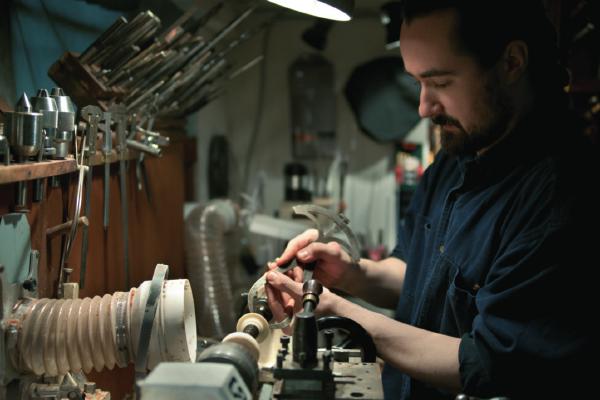
known since ancient times, was used by various makers in antiquity and into the Renaissance, Baroque and is still used today. Also, in the Japanese art of making a traditional sword, there is a separate word that means "Admiring the sword", so I used a similar concept and criterion for my instruments, when the finished pipes or flute had to attract attention both with its details and with its uniform appearance, and the next stage of admiration was sound when the instrument began to sing, the musical harmony was complemented by its design.
Therefore, when I started my craft, I devoted a lot of time to copying and studying the techniques of masters of the past. Great makers such as Jacques Martin Hotteterre, Thomas Stanesby, William Kennedy, Alexander and David Glenn, Leo Rowsome, Colin Ross, and Dave Williams, whose instruments I was lucky enough to try on, study, and hold in my hands, led me on my path to becoming the master of the bagpipes that I am today. I am even more than confident that the spark has been passed on.
I worked in the Sokolniki workshop until 2010, during which time I developed almost all of my basic designs that I use to this day. Then I started my first website, which was in both Russian and English languages because I had a mission to share my knowledge with the Russian-speaking public. I wrote many articles on the history of the bagpipes, the history of each specific type of bagpipes belonging to a particular region and their characteristics, articles on wood and various materials used in building bagpipes. Sadly, this work began to be plagiarised and copied without any without any mention of my workshop or
myself. In those days, I was playing a lot of solo pipes at various events in Moscow and Russia. One day, I received an urgent call from "Caledonian Club,"
asking me to play at a formal dinner for the Society of Designers – having agreed, it turned out that the dinner was being held in honour of a visit from the UK from Princess Michael of Kent who was the patron of the Society. I hope that the sight of a young man dressed in a Feileadh Mor (a historical Scottish kilt-eight meters long) and playing a small Scottish bagpipe was a pleasant surprise during her visit.
Unfortunately, after the Russian invasion of Georgia in 2008, something was ‘off’ in the air. Georgian musicians, concerts, wines disappeared from Russia it was the first sign that "patriotism" was starting to gain momentum...
In Moscow, laws regarding the servicing of certain buildings changed.
While previously all communal services were dependent on the district, now so-called HOAs (homeowners' associations) appeared, in reality, these were self-elected individuals who took a share from the rental income of non-residential areas in the buildings under their control. Since my workshop was located in such a building, inspections could now come to me at any time, for anything -
electrical wiring, plumbing, the designated use of the premises. And of course, the "law" was always on their side. Eventually, the management company who controlled the entire building, including my workshop, replaced all the heating pipes, breaking and dismantling all the floors and half of the structures covering the radiators. Not to be beaten, I restored both the floors and the entire design of the walls and rooms, so that I could work comfortably and peacefully again. But then, the hot water burst again, this time under the floor, and work stopped again. I had to dismantle the floors again to dry them out after the flooding, but the utility services refused to replace the pipe but simply put a clamp on it and said no further work would take place until 2022. At the same time, the management company did not loosen its grip, and rumours began to circulate within the Union of Artists (of which I was a member) that they simply wanted a large bribe in order to stop the harassment with inspections and constant pressure. Those artists who did not pay bribes were deprived of their workshops in Moscow.
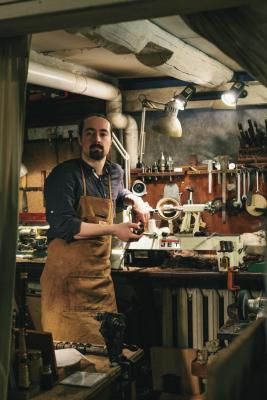
In the summer of 2010, I made the decision to move all my property and equipment to my father's workshop on Arbat Street. This workshop was where I spent all my childhood and youth, and my father was no longer working there at the time, so one of the premises was completely free. This allowed me to get rid of the constant stress associated with the workshop in Sokolniki. This was a "retreat," a surrender of positions, but it was also a way to preserve myself and my nerves. I was forced to hand over my keys without any compensation, it was happening ‘politely’ and ‘according to the law’ but it needed to be done to save myself and my business. And so I started working in the old historic heart of the city, a 15-minute walk from the Kremlin. The workshop in Arbat Street was in an old, 19th century mansion with 5-meter-high ceilings and most importantly, no neighbours. The house stood alone and only shared a courtyard with a school building, so you could make noise and play music almost around the clock, many musicians and craftsmen will understand me.
Working in the new workshop was wonderful, the old walls and proportions of the historic building were very motivating and set the tone for thoughtful and meticulous work. The separate entrance right into the school's backyard, overgrown with lilacs and huge plants, gave the feeling that you were not in the centre of a huge city but in a quiet rural place, especially in the evenings when the rush hour subsided and all became quiet.
The workshop even had a small stage where my musician friends and I rehearsed and played numerous "chamber concerts" without microphones, just in the acoustics of the old brick walls. It should be noted that the acoustics of the workshop greatly influenced how I heard my instruments, which underwent the final stages of reeding and voicing. It was precisely by changing one workshop to another that I realized how much the room affects the sound of instruments.
Simultaneously with changing my workshop, I was finally able to leave Russia since I was no longer of draft age. I was invited by my friend Anna
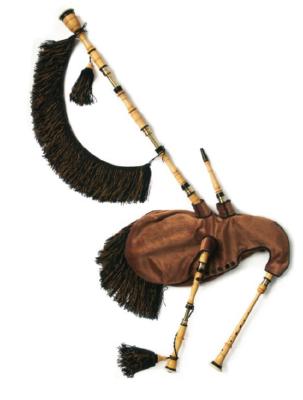
Seubert, a fiddle player with whom I played in Moscow at Na Caora Aitil, to play in Bavaria. There, I quickly became part of their group (double bass, guitar, violin, vocals), and subsequently, with tours, we travelled all over Bavaria and part of Germany. It was on these musical journeys that I came to the realization that I would travel more and more, and that all the concerts I organized and arranged were just rehearsals. I had something to compare them to - the lacklustre and indifferent audiences at concerts in Russia, the strange comments about the sound of the pipes and repertoire, and the increasingly frequent questions asked at concerts, "Why don't you play something Russian?" In contrast, the audiences in Germany were absolutely engaged and interested.
When they listened to you play, you could feel their enthusiasm, and they wouldn't let you go and would call for more.
In the following years, I spent my time perfecting my skills in making reeds, both drone and chanter, and surprisingly, I also reconstructed the Russian bagpipes (volynka) naming the instrument the "Staromoskovskaya duda" (named after the region around Moscow). After that, I was invited by Jose Manuel Foxo to the XXIX Xuntanza Internacional de Gaiteiros bagpipes festival in Ourense, Galicia, where I played my reconstructed instrument. The museum in Ourense, which is located in a school of Gaita playing, also commissioned me to create such a reconstructed instrument for their permanent exhibition. So I went to Galicia to play my own Russian bagpipes at the festival.
This trip became significant for me, as I fell completely in love with this country and its people, its musical traditions, and how they are integrated into Galician society. I lived in Galicia for six months every year and then would return to Russia to fulfil orders. I made friends with many wonderful musicians there, including Carlos Núñez. We travelled to high mountain villages, searching for old authentic chanters and entire Galician bagpipes that have been passed down from generation to generation.
The events in Crimea caused society to split in two and I lost a large portion of the people I had been friends with because it was simply impossible to continue communicating with them. Unfortunately, no one is immune to propaganda and the awakening of "patriotism" in their minds. The Maidan Uprising happened in Ukraine, which my friends and I perceived as hope for change, but it was also a dividing point. I remember walking down the street and suddenly telling myself that I would no longer make any mental investments in Russia - I stopped organizing concerts, and only two regular clients from Russia remained, who were also my students. I no longer gave interviews because all the newspapers, and especially television, were controlled by propaganda, which I never had and never wanted to have anything to do with. My goal became to give concerts all over the world and build a workshop in Galicia, especially since I had piqued the interest of the Cultural Council of the town where I lived. They provided me with a space for the workshop, which I began to equip with two Myford S7 lathes, a wood lathe, and lots of other equipment. Along with my friend and excellent fiddle player and flautist, Vitaliy Safronov, we toured Galicia with concerts, playing in ancient churches, concert halls, and festivals.
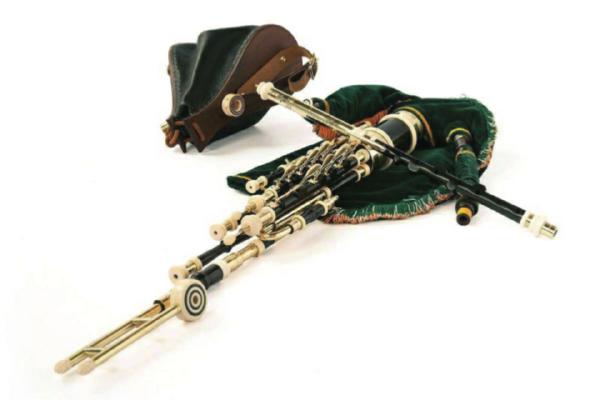
This may seem unlikely to many here, but when I came to Galicia, I already had developed Galician Gaita ready, and when I went to Ireland to join the Na Piobairi Uilleann Society in Dublin, everyone was surprised that I already had an Uilleann pipe from my workshop. Overall, of course, I was deeply impressed and touched by the openness and friendliness of the Irish people, musicians, and Uilleann pipes makers who warmly invited me to their workshops and to the sessions of Irish music. Many of these meetings turned into long-lasting friendships. The wonderful master of Uilleann pipes from Skerries, Dublin, Bill Haneman, became my supervisor, mentor, and teacher in making reeds, and I still maintain a friendship with him to this day.
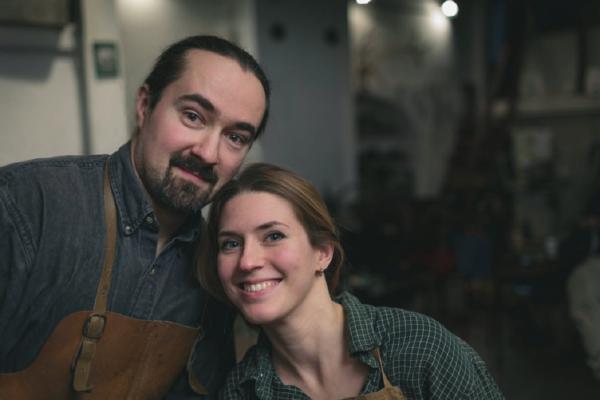
And then I met Maria Kovaleva, who became my wife, partner, and best friend. And we started working together in the workshop because in addition to her talent in Irish dancing (Maria had her own Irish dance school in Krasnodar, Russia), she was skilled at cold metalworking, such as silver, brass, and nickel silver, and her chasing and engraving skills were better than mine, and she was making all the valves now. The happy years of joint work, even in such a toxic atmosphere that had settled in our country, cannot be compared to anything else. We had our business that we loved and that never ceased to motivate us to wake up in the morning full of inspiration and enthusiasm.
After our wedding, our honeymoon trip was in Ireland, and somewhere in the middle of the West Coast, we learned from Facebook news that our workshop on Arbat Street had been taken over by some state-owned company.
We returned to Moscow. There, we found out that the locks on the workshop doors had been sawn off and replaced with new ones, and there were guards inside the premises who did not open the doors to anyone, communicated through closed doors, and gave the phone number of some manager to call for all questions! It turned out that there was a court case regarding our building, and the Union of Artists won the dispute over our building, but while the trial was ongoing, the Moscow Government filed for ownership rights of our building.
The problem was that our workshop was located was a very desirable spot.
After a couple of weeks of uncertainty, we were given the keys back and even assured that nobody, absolutely nobody, was going to evict us, but instead, we would need to sign a new contract. While waiting for the new contract to be prepared, I managed to finish several tools that were eagerly awaited by customers and I launched a crowdfunding campaign for the move. I was very surprised and delighted that so many anonymous people, from all over the world, helped. When the necessary amount was collected, we found a wonderful country house 60 km from Moscow with a workshop space and rented it. In a month, with our and our friends' titanic efforts, we were able to move all our equipment to the new location, so that such a seizure could not happen again, when your entire workshop is held hostage by bandits. That same winter, the COVID-19 pandemic began, and all borders were closed with draconian restrictions in place, but we were in a cozy wooden house with a fireplace far away from the dangerous place that our workshop on Stary Arbat turned out to be.
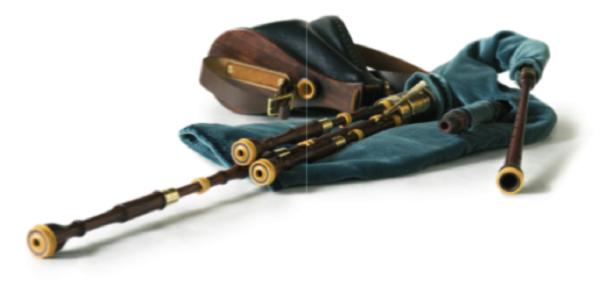
Life in the countryside, surrounded by ancient forests, was a breath of fresh air after all the adventures in Moscow. And we could sleep peacefully, without fear that someone would pick the locks, open the door, and so on. These two and a half years we still consider to be the happiest in our lives. Then our contract ended, and we loaded all our 4 tons of belongings and moved to the city of Krasnodar, to Maria's ancestral home. Over the next two years, several more episodes took place with our Moscow workshop. The Union of Artists claimed tens of thousands of euros of debt from us retrospectively, as if we were already paying under the new contract, even though I had prudently not put my signature anywhere. As a result, I simply had to return the keys for the second time. It may seem like I did it voluntarily, but when you're faced with such a choice, when you've experienced such stressful situations that are absolutely unsafe for you and your family, you choose to give up the keys.
In Krasnodar, we had to rebuild everything from scratch and convert part of the garage
and summer
kitchen into a workshop. However, a good portion of our belongings didn't fit, so we had to stack them in a large pyramid in the garden, covering them with plastic wrap. We moved in August and were able to work relatively calmly until February 2022. However, Russia started a terrible war with Ukraine. After recovering from the initial shock, Maria and I looked at each other and began to process the documents to leave. The decision was made quickly, as no one wanted to live and work in a country that had gone insane. In two months, we finished everything and moved to Milan, Italy.
Our long-term plans to move to Galicia fell apart due to the loss of the workshop, COVID, and endless moves first to the Moscow forests and then to the hot steppes of Krasnodar. We were only able to take our beloved cats, my trademark, and our good name with us. My workshop in Krasnodar was left abandoned.
Since then, almost a year has passed, and we have recovered both mentally and physically. We have obtained all the necessary documents for legal life and work in Europe, and I have begun to receive requests for instruments again.
Now we are sure that we will stay in Europe and plan to start a new workshop here on free land with renewed energy. This will be my second workshop in Europe and my sixth overall in my career as a maker, and I hope it will be the last.
While preparing this material, tragic news came that my teacher and friend Fyodor Nekrasov passed away. He was 82 years old. I am grateful that our friendship lasted more than half of my life. And during the time I spent with him, thanks to my friend, I formulated for myself the "Fine art of sound," which became my life philosophy.
This article is dedicated to my teacher!
https://anistratovbagpipes.com/
- Data Processing Notice (GDPR)
-
@BagpipeSociety on X (formally known as Twitter)
-
TheBagpipeSociety on Instagram
-
 BagpipeSociety on Facebook
BagpipeSociety on Facebook
Something wrong or missing from this page? Let us know!
